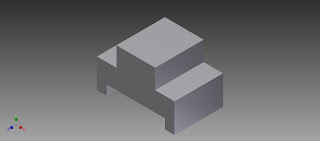Brainstorming-Create a sketch of one possible solution. Include labels.*
-Create a sketch of another possible solution. Include labels.*
-Create a sketch of a third possible solution. Include labels.*
-Use a decision matrix to justify the approach you chose.
Material Prep
-Generate a list of materials required for build day.*
-Document a plan to ensure materials are brought in on block day.
Build Achievements
Material based Achievements:
(your egg is not included in the material size)
(air is ubiquitous and not included in material size. "Rare" commodities like helium are.)
-Your materials fit inside a printer paper box*
-Your materials fit inside a shoe box
-Your materials fit inside a cigar box
-Your materials fit inside an Altoids box
Material Weight:
(your egg is not included in material weight)
-Your materials weigh less than 500 grams.*
-Your materials weigh less than 300 grams.*
-Your materials weigh less than 200 grams.*
-Your materials weigh less than 150 grams.
-Your materials weigh less than 100 grams.
-Your materials weigh less than 50 grams.
-Your materials weigh less than 25 grams.
Drop Achievements
Drop Accuracy:
-You hit the butcher paper!*
-You hit inside the third ring!*
-You hit inside the second ring!*
-You hit inside the first ring!*
-You hit the Bullseye!*
Drop Time:
-Your solution takes less than 1/2 second to hit the target!
-Your solution takes more than 2 seconds to hit the target!*
-Your solution takes more than 3 seconds to hit the target!
-Your solution takes more than 4 seconds to hit the target!
-Your solution takes more than 5 seconds to hit the target!
Egg Resilience:
-Your egg didn't break in any way! (awarded three times)*
-Your egg didn't break in any way! (awarded three times)*
-Your egg didn't break in any way! (awarded three times)*
Calculation Achievements
-Describe an aspect of the event using arithmetic.
-Describe an aspect of the event using geometry.
-Describe an aspect of the event using algebra.
-Describe an aspect of the event using calculus.
-Seek out additional instruction from your math teacher in support of a Calculation Achievement.
Communicate Results Achievements
-Create promotional materials for your design.
-Model your solution using CAD software.
-Create a multiview drawing of your CAD model.
-Dimension your multiview drawing.
Other Achievements
-Help set up the Bullseye.
-Come up with a clever name Mr. Olson uses for an existing Achievment.
-Design an Achievement Mr. Olson approves for next year's Egg Drop Challenge.
-Suggest a redesign to the activity that Mr Olson confirms he will use for next year's Egg Drop Challenge.
All achievments with stars were acomplished
We earned 17 achievments


























